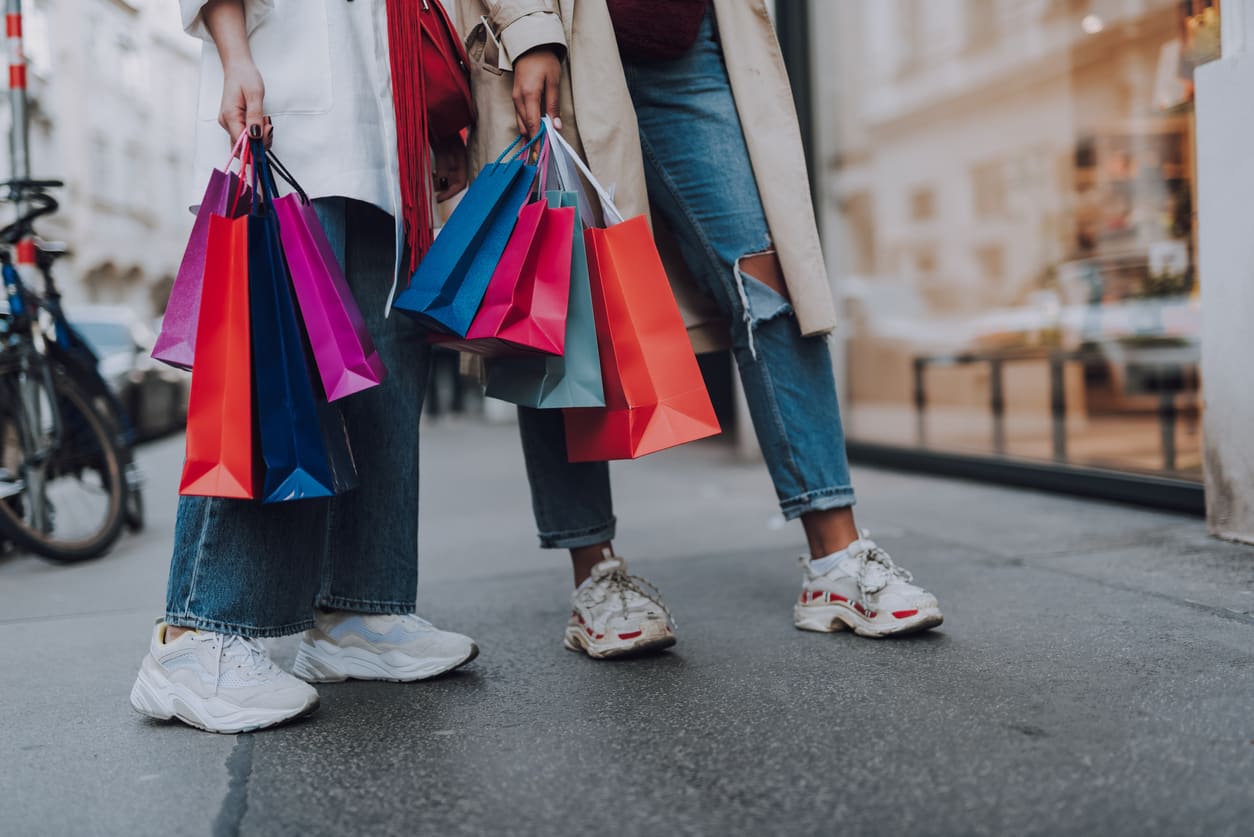Elena Canorea
Communications Lead
«Adaptabilidad». Con esa palabra comenzaba el informe de Brandwatch ‘El sector retail en España 2021’. La investigación señalaba cómo el sector minorista debía adaptarse a un cambio profundo que implicaba desde un escenario pospandemia para cumplir con medidas de higiene y salud hasta las nuevas tendencias sobre consumo y sostenibilidad.
En este artículo vamos a hablar de diversos pain points del sector minorista y cómo resolverlos (o adaptarse) gracias a las tendencias en auge del sector retail y las tecnologías más disruptivas, que se ponen al servicio de los minoristas para que construyan su futuro.
Los pain points o puntos de dolor son los problemas o incertidumbres que tienen los clientes de un sector en cierto momento. Conocer los pain points contribuye a encontrar soluciones rápidas y buenas para que la dificultad no persista. También, ayuda a resolver sus problemas y ofrecerles mejores productos o servicios, lo que repercute en los beneficios o la imagen de marca de tu negocio.
La pandemia y la consiguiente digitalización debida al distanciamiento físico han alterado un sector que se ha enfrentado a grandes cambios en poco tiempo: comercio electrónico, pagos a distancia, páginas web atractivas para vender más… Quienes se adaptaron en los años anteriores ya contaban con esa ventaja. Quienes no lo hicieron tuvieron que ponerse con ello o deberán hacerlo cuanto antes.
Una web con un diseño atractivo, una app para comprar en pocos toques de dedo o un chatbot que haga reservas de viajes son algunas de las formas con las que el sector retail puede enfrentarse a uno de sus principales pain points en la actualidad: atender las necesidades de unos usuarios cada vez más digitales.
Estos cambios se dan en un contexto de un público cada vez más exigente, con más expectativas y que busca adquirir sus productos o consultar sus dudas en más canales. La omnicanalidad (el contacto entre los clientes y las empresas por varios canales: web, redes sociales, teléfono…) es un imprescindible de los últimos años.
Para expandir la omnicanalidad en retail, el sector debe hacer una fuerte apuesta por la digitalización, tanto del comercio online (que incluye crear una tienda electrónica, pero también estrategias de email marketing para atraer y fidelizar compradores) como de servicios digitales de atención al cliente (es el caso de los chatbots).

Todo esto se ha de hacer sin despreciar el comercio físico. Colores, olores, atención de los empleados… El espacio físico debe convertirse en un lugar agradable que visitar, una experiencia entretenida que va más allá de la compra.
¿Cómo lograr que más gente entre en el comercio (físico o electrónico) y adquiera un producto? Personalizar la experiencia de compra es clave para que los usuarios se encuentren más a gusto y consuman más.
Para conseguirlo, de nuevo la tecnología es una aliada del sector retail. Gracias al Big Data, las empresas pueden recopilar grandes cantidades de datos que, tras analizarlos, aporten tendencias de consumo u orientaciones con el fin de, por ejemplo, diseñar un espacio físico o digital en el que el usuario se sienta a gusto, quiera pasar tiempo y, como punto final, gaste dinero. O también, con el fin de crear ofertas y descuentos customizados para un grupo de clientes.

Otra tecnología que ayuda a personalizar y mejorar la experiencia es la realidad mixta. Ya existen probadores virtuales en las tiendas para examinar a golpe de bit cómo nos queda un vestido o una chaqueta. Y no hace falta acudir a un centro comercial para ello: una marca de moda también puede crear una app de realidad aumentada para que cualquier persona pruebe su catálogo en casa gracias a la cámara del teléfono móvil.
¿Qué quieren adquirir los usuarios? ¿O qué desearán adquirir en unos meses? Saberlo eliminaría las dudas sobre qué llevar a los estantes de una tienda o cómo diseñar una campaña de marketing para atraer más compradores.
Así, conocer las intenciones de compra de los usuarios ayudaría a calcular el stock del almacén, preparar la tienda física o diseñar una promoción adecuada a ello. Para conseguirlo, existen tecnologías de escucha social o social listening que miden la conversación en redes y que, combinadas con otras que analizan los datos de buscadores, permiten tomar las decisiones adecuadas.

Con el aumento del comercio online, la usabilidad de aplicaciones y páginas web se ha convertido en un asunto primordial. El diseño, la arquitectura de la información, la interfaz… son conceptos que no se pueden desdeñar para que las experiencias de compra y de devolución sean agradables y no frustren a los usuarios.
Lo ideal es que la usabilidad se tenga en cuenta desde el inicio de creación de la web corporativa o del e-commerce. Para ello, contar o aliarse con un equipo de UX/UI (user experience o ‘experiencia de usuario’, y user interface o ‘interfaz de usuario’) es una de las mejores decisiones que puede tomar una empresa de retail ante el lanzamiento de un producto, un rebranding o un problema de usabilidad. Contando con su trabajo desde el comienzo de un proyecto, se evitan errores en fases posteriores, que obliguen a desandar el camino iniciado.
En los últimos meses, la escasez de suministros ha sido noticia. Muchas industrias y negocios se han visto afectados por la falta de materias primas o chips. Esto afecta a las existencias de productos en las tiendas, a los precios y a futuros lanzamientos. La crisis se notaría especialmente en momentos de gran consumo como el Black Friday, la Navidad, el Día de la Madre, el Día del Padre o las rebajas.
Los problemas en la cadena de suministro no solo se refieren a la falta de suministros o al momento de compra; también, cuando los usuarios han de devolver un producto y se encuentran con dificultades logísticas para ello.
Para evitar estos problemas en la cadena de suministro, la inteligencia artificial es una aliada del sector retail. En concreto, ayuda a industrias y comercios a predecir si los proveedores sufrirán retrasos y a tomar una alternativa en su caso.
Cajas de cartón para mandar pedidos, camiones con emisiones de dióxido de carbono… La sostenibilidad está en el punto de mira de muchos consumidores preocupados por el medioambiente y el futuro de las nuevas generaciones. Las empresas retail que deseen agradar a estos consumidores o cumplir con los Objetivos de Desarrollo Sostenible de la ONU (ODS) buscan unos procesos de trabajo más sostenibles que no afecten a su negocio y mejoren su imagen de marca.
Tecnología y sostenibilidad vuelven a unirse para ayudar al sector retail. Por ejemplo, gracias al Blockchain y al IoT, las compañías de retail pueden ‘emitir’ créditos de carbono tokenizados para compensar sus emisiones de gases. También existen formas de usar menos energía, como refrigerar los servidores donde almacenan sus datos.

¿Quieres que te ayudemos a implantar la tecnología en el sector retail?
A la vez que cambian las tendencias de compra y deseos de los consumidores, surgen innovaciones tecnológicas que se pueden implantar con éxito para satisfacer estas demandas. El sector debe estar atento a todo ello para seguir innovando en las experiencias de compra y no desaparecer.
En Plain Concepts conocemos las tecnologías que permiten a las empresas del sector retail seguir innovando y atender los deseos de unos consumidores cada vez más personalizados y conscientes de su poder de decisión. Desde los primeros diseños de una nueva app de e-commerce al desarrollo de soluciones tecnológicas para la cadena de suministro, colaboramos contigo para atacar esos pain points.
Elena Canorea
Communications Lead
